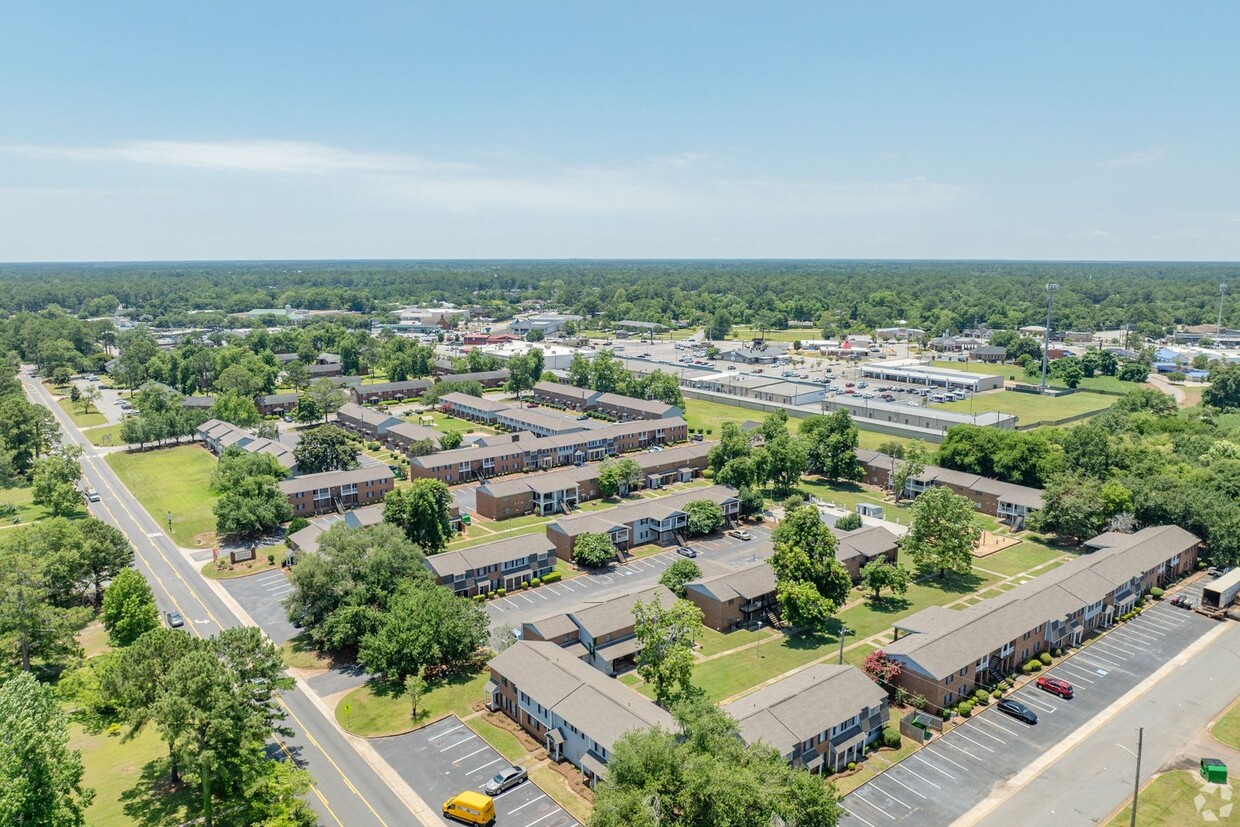Affordable housing gap spells opportunity
Affordable housing gap spells opportunity
As the gap between supply and demand for affordable housing widens, institutional investors see opportunities to invest to meet ESG goals and boost financial returns, writes Keith Button.
Institutional investors have grown more interested in US affordable housing – as have the government-sponsored finance agencies and state and local governments – as the undersupply in the country has grown. “We are seeing this increasing conversation around affordable housing, maybe less of a stigma around affordable housing, because it just impacts so many people across all markets,” says Angela Kelcher, the Dallas-based affordable housing group leader for JLL.
With a shortage of 7.3 million affordable housing units in the US, according to the non-profit National Low Income Housing Coalition, and only 100,000 or so new units built every year, “the math just doesn’t work,” says John Williams, chief investment officer of Avanath Capital Management, an affordable housing investment firm based in Irvine, California. “It is still a business that basically has unlimited demand and limited supply. That is why people are finding it attractive: because of that and the stickiness of it,” he says. High-cost coastal housing markets such as Los Angeles, Miami, New York and San Francisco have, of course, faced affordability issues for a long time. But demographic and migration trends have brought affordability challenges in recent years to markets that historically have not had that problem, such as Dallas, Fort Worth, Orlando, Phoenix and Salt Lake City, Kelcher notes. She says: “Really, there is no market within the United States of America that has enough affordable housing to meet the demands of its residents.”
For investors, part of the appeal of the segment is that residents tend to prioritize their rents over other expenses because there are so few options for safe, quality housing. “Because you have rents that are affordable, affordable housing can act as a buffer against volatile economic conditions or recessionary periods because they tend to stay more fully occupied,” Kelcher says.
Another appealing element comes from affordable housing funded by federal low-income housing tax credits. These properties have rents that are reset according to adjustments to area median income. Because area median income correlates with inflation, investors in these projects can anticipate revenues will rise as incomes rise in those markets, says Desi Co, managing partner of Accord Group Holdings, a San Francisco-based capital advisory firm. “We think that is interesting because it is non-correlated. It is not directly correlated to market movements and market rents,” Co says. That makes these projects a nice diversification tool for investors. They also provide a durable income yield with inflation correlations, which can appeal to pension funds and other investors that need to make sure their asset base growth keeps up with their liabilities base.
Even in a difficult economy, affordable housing is a durable investment, as proven during the pandemic, says Avanath’s Williams. “Our portfolio – and I think a lot of other people’s portfolios – is near 100 percent occupied, near 100 percent collected, very low turnover,” he notes. Renters do not want to move when their rents are set at 30 percent below comparable properties and their homes are in high-quality, well-located properties. “That is very durable, very stable and we think very defensive against luxury housing,” Williams says.
Affordable housing also compares favorably because luxury housing as a whole recently raised rents quickly and aggressively, overshooting their markets, he says, while regulated rental properties were held to incremental, set increases. “That is why you are seeing these large institutions buy these portfolios: because they feel like they are just a great hedge,” Williams says. In May, TIAA asset manager Nuveen acquired a portfolio of assets from affordable housing owner, operator and developer Omni, increasing its affordable housing assets under management to $6.4 billion.
In April, the Community Development Trust, The Michaels Organization and Goldman Sachs Urban Investment Group purchased more than 10,000 units of affordable housing for $1.2 billion, increasing the partnership’s total to 22,000 units. Meanwhile, large investors such as Blackstone’s BREIT and Starwood’s SREIT hold large affordable housing portfolios because they are a stable source of income for quarterly dividend distributions, Williams says.
Fannie Mae and Freddie Mac, the government-sponsored enterprises, have continued to expand their footprint in affordable housing, providing liquidity to the market through loan programs that accommodate state and local initiatives like special zoning designations or property tax exemptions for affordable housing, Kelcher says.
Fannie and Freddie have become more creative with their credit parameters and more aggressive on pricing, in some cases, and in offsetting the costs of design elements or services that promote health and wellbeing of residents. This includes housing built with close access to public transportation, walking paths or well-lit stairwells, or providing residents with financial literacy classes, health screenings, exercise activities or credit score boosts for commendable rent payment histories.
ESG appeal
Services for residents also check some ESG boxes for investors. “Broadly, European ESG-motivated investors not only like the affordable housing, but they also like to see the services tailored to the residents included,” Kelcher says. Also, Fannie labels its bonds as “social” when they include a certain percentage of affordable housing, similar to its marking of certain mortgage-backed securities with a green designation.
Affordable housing also has an inherent ESG appeal for investors because it serves low-income people, plus property managers can provide social programs to residents such as afterschool programs, personal finance classes, arts programs and sports programs, and environmental amenities such as solar panels, LED lighting or other carbon-footprint reducing measures, Williams says.
“There is nothing more impactful than making sure that people can afford to have a roof over their head,” says Co. “It is super-important for the viability and stability of a country like the US or countries in Europe to make sure that the majority, if not all, of their citizens have adequate shelter.
“It is great that the strategy is also profitable, but the ESG element of keeping things affordable maybe for longer, even beyond existing rent regulations or rent covenants and existing agreements with governments? That is very, very appealing.” Affordable housing that is not rent-regulated, typically referred to as market-rate workforce housing, does not offer the impact benefit to investors because the rents will rise quickly and substantially in a high-growth area, Co notes. The impact of environmental and social initiatives can also be measured on both the project and community level, says Carl Chang, chief executive of Kairos Investment Management, a real estate investment company based in Irvine, California. For Kairos, return on cost is tracked for some ESG initiatives to show investors how ESG generates economic returns. For example, ESG initiatives that save water or energy can accrue property value, he says.
Measuring social impact is also complicated by privacy issues, says Williams. A vaccination program for residents cannot record people’s names to verify their participation, for example; or an afterschool program cannot seek confirmation of a student’s progress from their elementary schools and their test scores, he says. So, for social programs, Avanath’s property managers are usually limited to counting participants, and they obtain wellness certificates for all of their properties, he says. Measuring environmental impact is easier, but the data collection, impact consultants and dedicated ESG staff that are required to maintain a high enough GRESB score – an independent ESG assessment – to attract and keep European investors is expensive, Williams adds.
Adapting to interest rates
So far this year, rising interest rates and bank failures have disrupted capital markets and slowed dealflow for affordable housing projects, but Chang expects transaction volume in the space to rebound in the second half of 2023 and into 2024.
Buyers are attracted by the opportunity – both the resilient returns for the sector and the continuing shortage of affordable housing throughout the US. The high cost of capital, inflation and shortages of construction labor have also conspired to limited new construction of affordable housing, which boosts long-term investment strategies in affordable housing.
“People are beginning to understand that we want that healthy society, and they are able to provide for this very important need of putting roofs over people’s heads and providing affordability, and not just Class A multifamily and high-priced development,” Chang says.
However, the momentum of investment into the space has slowed from last year because of high interest rates, bank failures and recession fears, Co says. “All those things just happened to create lower momentum for impact strategies in the residential space. But interest is still there.” That momentum will pick up again as investors get used to the new normal of interest rates of 3 percent or 4 percent and as growth rates justify relatively low cap rates. “As those things start settling in, you are going to see people transact with some gusto again,” Co says. With the US multifamily housing market evenly divided between market-rate units and affordable housing units, with about 10.2 million units for each, the top 50 players in the affordable housing space represent only 8 percent of affordable housing share, Co says, which shows how fragmented the sector is.
“The fact that funds have emerged means that people are trying to access the sector,” Co says. He believes the current slowdown in affordable housing deals will be a “speed bump” as investment accelerates again. “The sector is really a natural match for not just impact investors – ESG investors – but also just people who are looking to have steady durable income that has a lot of resilience in spite of interest rates going up, in spite of covid-19, in spite of a lot of things that we have experienced in the last few years,” he adds.
At SIMM Capital we feel that Real Estate – The safest investment in the world. Why venture down this road alone. Rely on those that know the business, We live it and breath it – at SIMM Capital our investment strategy is to give everyone the chance to build wealth through real estate. We seek the best assets that hold the largest opportunities to improve on management and value, while delivering in rent growth year over year that will result in high quality returns. We know the business. To see how we can help you click – the link www.simminc.com




Recent comments